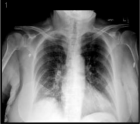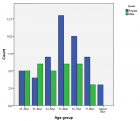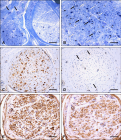Table of Contents
Natural Rubber Latex on Medical Applications
Published on: 6th December, 2023
In this review, latex from the Hevea Brasiliensis tree is presented as a material originating from nature, used to produce natural rubber, raw material for countless products for industry, as well as the manufacture of preservatives, and gloves, among others. Nowadays, its potential is expanding into various technological areas, one of which is biomedical, as described in this article. Latex has the possibility of being preserved using ammonium, which is a chemical of high health risk, but nowadays it is being substituted by acid systems excluding traditional chemicals. With these new preservation processes, the prospective use of latex for the design of biosensor scaffolds for drug release, and as membranes that can replace synthetic latex in patches for bioremediation in soft and bone tissues, synthetic muscles, membranes for biological micro laboratories, among others, is being studied to optimize its possibilities.
Emerging One Health Preparedness to Combat National Burden of Diseases in Pakistan: A Comprehensive Insight
Published on: 23rd November, 2023
In order to integrate and enhance the health of people, animals, and the environment, a multidisciplinary “One Health” concept has been coined. However, developing countries have frequently lagged in embracing this innovative vision. Pakistan’s ecology, human health, and animal health have all been severely jeopardized due to a lack of resources. Human health is significantly impacted by the spread and comeback of zoonotic illnesses, especially for people who live in rural regions and frequently interact with domestic or wild animals. More than 75% of zoonotic diseases were transmitted contiguously from animals to humans or indirectly through interactions among agents or vectors (including both humans and other animals). This review article gives critical insights into the most common zoonotic diseases found in Pakistan in addition to underlining the importance of the “One Health” philosophy in the management of these illnesses. Interdisciplinary research efforts are required given the current circumstances in order to politicize sustainable solutions for decreasing the disease burden in human and animal populations simultaneously.
Hazardous Effects of Malaria for Patients Residing in Low-probability Malaria Areas: A Case Report and Critiques of the Literature for Cerebral Malaria
Published on: 13th September, 2023
Despite decades of global and country commitments towards eradicating malaria, malaria remains the most hazardous parasitic disease and the most common cause of fever for humans, especially in tropical countries. Plasmodium falciparum causes 90% of malaria cases. Coma [Cerebral Malaria (CM)], acidosis, hypoglycemia, severe anemia, renal dysfunction, and pulmonary edema are the most common complications of malaria caused by Plasmodium falciparum and the most common cause of death related to malaria. People from less prevalent malaria areas are at high risk of developing these complications. A 16-year-old male from a low malaria transmission area was diagnosed with CM. Prior to developing CM, he was treated with Coartem. CM is a medical emergency and one of the forms of severe malaria. CM has high mortality and morbidity rates. Yet, international health-related agencies, funders, and policy-makers are unfamiliar with it. The continuous occurrence of CM validates the considerable need for global investment in malaria control and elimination programs. Early administration of Artesunate to all patients suspected of having severe malaria would reduce global malaria-related mortality and morbidity. Simple tests, such as the determination of malaria parasitic density either with thin or thick blood smears, may influence the proper management of all severe malaria cases. However, in clinical practice, the determination of malaria parasitic density is not routinely done. Further commitments are needed to ensure routine determination of malaria parasitic density for all suspected severe malaria cases. Moreover, further commitments are needed to guarantee the proper management of CM because it is a major cause of reversible encephalopathy in tropical countries.
Healthcare Bioethics: A Vital Branch of Bioethics and a New Possible Pillar for Modern Healthcare Systems Strengthening Worldwide
Published on: 5th September, 2023
Globally, all people deserve the highest level of respect for their dignity, rights, and health. Bioethics has been recognized as a powerful discipline that aims to ensure such respect. Fritz Jar (1895–1953) and Van Rensselar Potter (1911–2001) will remain heroic men who ushered in the existence of the discipline of bioethics. Bioethics has been recognized as the science of survival and a bridge to the future. Thus, bioethics aims to enrich people’s wisdom. Wisdom is the knowledge of how to use knowledge for human survival and improvement in the quality of life. Worldwide, all people must widely possess such knowledge. Unfortunately, after many years of existence, implementing the principles and goals of bioethics remains centralized and confined to academic fields. Due to its centralized status, few branches of bioethics have been recognized. Besides, both pre-standard and standard practices still exist in the field of bioethics. Healthcare bioethical principles have been mentioned in numerous publications. However, healthcare bioethics has not been recognized as a vital branch of bioethics. The lack of well-established healthcare bioethics hinders strategies for eradicating many of the ephemeral and heuristic approaches that are still obstructing the achievement of optimum health status for numerous people worldwide. Integrating bioethical principles in all healthcare sectors in decentralized manners would lead to the existence of healthcare bioethics. The purpose of this manuscript is to describe healthcare bioethics as a vital branch of bioethics with respect to its description, branches, core principles, functions, system components, and pre-standard and standard practices of healthcare bioethics.
Environmental PM2.5, Physical Activity Levels, and Aerobic Capacity, of Smokers and Non-Smokers
Published on: 27th July, 2023
Aerobic capacity of young men (19 years - 24 years) is high, but can be influenced by many factors like physical activity, smoking, and air pollution with environmental PM 2.5. Objectives: (a) - to estimate the aerobic capacity in young men (smokers and non-smokers) living in areas with higher PM 2.5 using Queen’s College Step Test (QCT). (b) - to find whether aerobic capacity is associated with the International Physical Activity Questionnaire (IPAQ)’ three classes, for smokers and non-smokers. Methods: In a cross-sectional study using criteria-based sampling a total of N = 60 smokers & non-smokers were included from the Delhi NCR region. IPAQ, Peak Expiratory Flow Rate (PEFR), Heart Rate, Systolic Blood Pressure, Diastolic Blood Pressure, and PM 2.5 and PM 10 levels were recorded. A comparison of smokers and non-smokers was performed using z test. Smokers and non-smokers were divided into three classes using physical activity levels and compared for aerobic capacity. The correlation of aerobic capacity with variables was seen using Pearson’s correlation coefficient. Multiple R was checked to study the model of cause and effect for aerobic capacity. Results: Significant difference is seen between smokers and non-smokers in the aerobic capacity (Mean ± SD smokers - 65.22 ± 8.73 ml/kg/min; Mean ± SD non-smokers 60.04 ± 7.7 ml/kg/min p value = 0.00). For non-smokers, a low level of physical activity shows a strong correlation with aerobic capacity (r = 0.78; p = < 0.05). No correlation of aerobic capacity is seen with physical activity levels among smokers. Aerobic capacity shows a significant negative and moderate correlation with PM 2.5 (r = -3.1; p = 0.016). The multiple R coefficient value for the model of cause and effect is 6.99 with a p - value of 0.0449 for this. Conclusion: Smoking affects aerobic capacity significantly for young men. High and moderate levels of outdoor physical activity do not increase aerobic capacity in areas with high PM 2.5, whereas low levels show a positive correlation among non-smokers only.
Interferons as a Potential Therapeutic Drug for COVID-19: A Literature Review of Mechanisms, Current Clinical Trials, and Challenges
Published on: 10th July, 2023
The 2019 COVID-19 pandemic caused by SARS-CoV-2 has resulted in many fatalities worldwide. Despite various types of supportive care, mortality rates for patients with comorbidities remain high. To explore alternative treatment options, interferons (IFNs) have emerged as promising therapeutic drugs for SARS-CoV-2. This review aims to investigate the potential of IFNs as a drug with details on their mechanisms of action, and available data on their use with ongoing clinical trials, results, potential limitations, and challenges. Recently published research articles, which are systematically searched through online databases, have been selected and found that IFNs have colossal potential in treating SARS-CoV-2 infection by modulating the host’s immune response and inhibiting viral replication and decreasing the severity of disease and hospitalization (p = 0.03, ± 0.05) and (p = 0.04, ± 0.05) respectively. However, due to less available data, more controlled and randomized trials are needed to confirm the efficacy and safety of IFN therapy. The optimal dosing and duration of IFN therapy also remain to be determined. Although further research is needed the wait for ongoing clinical trial results under investigation is also important for a better understanding of IFN therapy.

HSPI: We're glad you're here. Please click "create a new Query" if you are a new visitor to our website and need further information from us.
If you are already a member of our network and need to keep track of any developments regarding a question you have already submitted, click "take me to my Query."





















































































































































